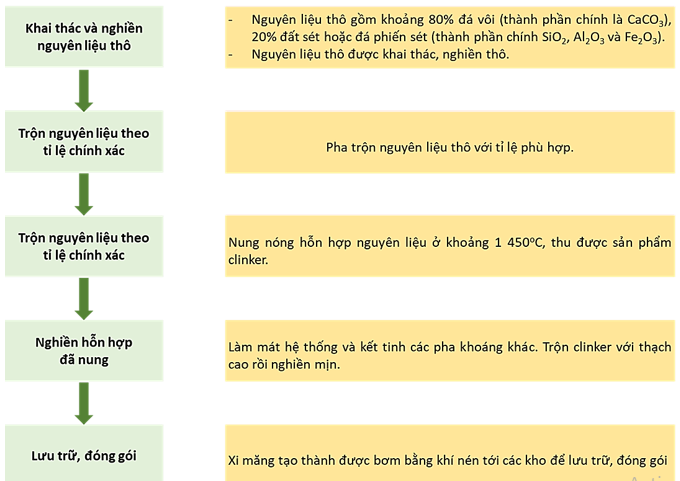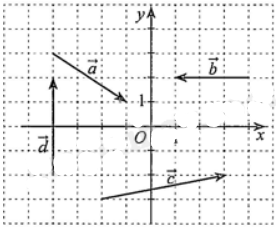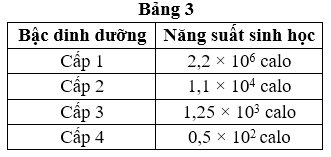Chị C là nội trợ thường xuyên đi siêu thị để mua thực phẩm và các đồ gia dụng trong nhà. Trong trường hợp này chi C đóng vai trò là chủ thể gì của nền kinh tế?
Hãy suy nghĩ và trả lời câu hỏi trước khi xem đáp án
Chủ thể tiêu dùng là người mua hàng hoá, dịch vụ để thoả mãn nhu cầu tiêu dùng cho sinh hoạt, sản xuất. Vậy chị C là chủ thể tiêu dùng vì thường xuyên đi siêu thị để mua thực phẩm và các đồ gia dụng để phục vụ nhu cầu sinh hoạt trong gia đình.
Tài liệu "Bộ Đề Kiểm Tra Giữa Học Kì I - Năm Học 2023-2024 - Giáo Dục Kinh Tế Và Pháp Luật 10" tổng hợp các đề kiểm tra từ nhiều trường THPT trên toàn quốc, được biên soạn bám sát chương trình học. Đề thi bao gồm các dạng câu hỏi trắc nghiệm và tự luận, tập trung vào các chủ đề trọng tâm: khái niệm kinh tế và pháp luật cơ bản, vai trò của thị trường và pháp luật, quyền và nghĩa vụ công dân trong kinh tế và pháp luật.
Câu hỏi liên quan
Finally, very few people agree________the construction of a local library for children.
Xi măng là loại vật liệu được sử dụng rộng rãi trong đời sống. Trong số các loại xi măng, xi măng Portland thông thường (Ordinary Portland Cement, viết tắt OPC) được sử dụng phổ biến nhất.
Xi măng thông thường (OPC) được sản xuất theo quy trình dưới đây:

Các quá trình vật lí và hóa học xảy ra bên trong lò nung sản xuất xi măng:
- Ở nhiệt độ 20oC – 100oC: làm bay hơi các phân tử nước hấp phụ.
- Ở nhiệt độ 100oC – 430oC: tách loại nước tạo thành các oxide như SiO2, Al2O3, Fe2O3.
- Ở 800oC − 1 100oC: tạo calcium oxide CaCO3 → CO2 + CaO.
- Ở 1 100oC – 1 300oC: tạo thành pha silicate thứ cấp.
- Ở 1 300oC – 1 450oC: quá trình thiêu kết và các phản ứng xảy ra bên trong vật liệu nóng chảy.
(Sách Chuyên đề học tập 12 – Kết nối tri thức với cuộc sống, NXB Giáo dục Việt Nam, tr26, 27)
Một bao xi măng Portland tiêu chuẩn 50 kg có 4,5% hàm lượng là thạch cao (CaSO4.2H2O). Khối lượng nước trong một bao xi măng này là (Biết nguyên tử khối của các nguyên tố: H = 1, O = 16, S = 32, Ca = 40).
Hàng hoá bán được trên thị trường nghĩa là chủng loại, hình thức, chất lượng hàng hoá đó đáp ứng yêu cầu của xã hội là nội dung thể hiện chức năng gì của thị trường?
Read the following passage about the Koromi trend and mark the letter A, B, C, or D on your answer sheet to indicate the best answer to each of the following questions from 31 to 40.
[I]. If you’ve done any traveling at all, you’re likely quite aware that customs and etiquette differ from one culture to another: what may be perfectly innocuous in one place may be hideously offensive in another, and vice-versa. [II]. Granted, even if you haven’t traveled at all, you’re probably aware of the fact that certain types of behavior aren’t exactly acceptable in other countries: belching at the table may be a sign of gratitude in some places, but in most areas of North America and Europe, such a display will earn you a fair bit of ire. [III]. Whether you plan on traveling to any of the places listed below or just doing business with a foreign client, it’s important to educate yourself on the standards of politesse and etiquette beforehand-the last thing you want to do is offend someone with any ignorant, boorish behavior. [IV]. Here’s how to be polite in different countries.
When dealing with Japanese clients, be sure to dress fairly conservatively, and make sure that you bow lower than they do upon meeting them. Accept gifts with both hands and open them later, not in front of the giver, and never blow your nose at the dining table. Avoid asking and answering direct questions: it’s better to imply rather than ask, and to answer with vagueness during conversations.
In Kenya, when greeting someone older or of a higher status than yourself, grip their right wrist with your left hand while shaking it; it’s a sign of respect and deference. Do ask questions about their health, family, business etc. before getting to major topics, as skipping these niceties is seen as impolite. If sharing meals, do not begin eating until the eldest male has been served and starts to eat.
Turning down an alcoholic drink is considered terribly offensive in Russia, so it’s a good idea to fortify yourself with some greasy food before heading out for a meal with Russian or Ukrainian clients. Don’t smile at strangers or they’ll think you’re deranged, and when paying for items, place your money on the counter rather than trying to hand it directly to the cashier.
Where in paragraph I does the following sentence best fit?
"Cultural differences in behavior can lead to unintended offense in certain regions."Hội đồng nhân dân được phân cấp theo đơn vị hành chính ngầm mấy cấp cơ bản?
Thị trường gồm những yếu tố cơ bản nào sau đây?
Cho biết những phát biểu dưới đây là đúng hay sai.
Một dòng sông rộng 100 m và dòng nước chảy với vận tốc 3 m/s so với bờ theo hướng Tây - Đông. Một chiếc thuyền đi sang ngang sông với vận tốc 4 m/s so với dòng nước. Tính độ lớn vận tốc của thuyền so với dòng sông.
Với bình xịt khử trùng, khi ta ấn nút, van mở, hiện tượng nào sẽ xảy ra với khí trong bình?
Trong phòng thí nghiệm, để nuôi cấy một loại vi khuẩn, người ta sử dụng môi trường nuôi cấy gồm 100g cao nấm men, 6g MgSO4 và 9g NaCl2. Đây là kiểu môi trường nuôi cấy:
Trong mỗi ý a), b), c), d) ở mỗi câu, thí sinh chọn đúng hoặc sai.
Các polymer ngày càng chứng tỏ tầm quan trọng của nó đối với đời sống, đặc biệt là trong lĩnh vực chế tạo vật liệu.
Trong mặt phẳng toạ độ \(Oxy\) cho các vectơ \(\vec a,\vec b,\vec c,\vec d\) được vẽ ở hình bên. Ta có các khẳng định sau:

A) \(\vec a = (2; - 3)\); B) \(\vec b = ( - 3;0)\); C) \(\vec c = (5;1)\); D) \(\vec d = (4;0)\).
Số khẳng định đúng là?
Cơ quan nào của nước ta được thực hiện quyền lập hiến và quyền lập pháp?
Cho tập hợp \[A = \left\{ {1\,;\,2\,;\,3\,;\,4\,;\,x\,;\,y} \right\}\]. Xét các mệnh đề sau đây:
\[\left( I \right)\]: “\[3 \in A\]”.
\[\left( {II} \right)\]: “\[\left\{ {3\,;\,4} \right\} \in A\]”.
\[\left( {III} \right)\]: “\[\left\{ {x\,;\,3\,;\,y} \right\} \in A\]”.
Trong các mệnh đề sau, mệnh đề nào đúng?
1. No matter who we are or where we are from, we only have 24 hours each day to get things done. Some people seem to make the most of their time, using it to achieve their goals and dreams. Others feel that life is passing them by and they aren’t accomplishing anything. If you are in the latter group, it is not too late to turn things around. By implementing a few simple hacks, you can start getting better results very quickly.
2. If you want to become more productive, it pays to learn about the Pareto principle (which is also known as the 80-20 rule). It states that for most tasks, 80 percent of the results we get come from 20 percent of the work we do. For example. 80 percent of the company sales usually come from 20 percent of customers. Therefore, the trick is to focus your efforts on the key 20 percent of actions that truly matter to greatly improve your results.
3. In some cases, people may be busy from morning to night but still seem to get nothing done. In this situation, the problem might be that clear goals haven’t been set. To fix this, set some time aside to list the things you want to achieve in life. Then, select the top three or four that you want to focus on for the next year. Look at your goals every night before bedtime and ask yourself what are the next actions to accomplish each day. Then, promise yourself that you will finish these tasks no matter how busy you get. If possible try completing the tasks first thing in the morning so you are assured of success.
4. Another common mistake regarding productivity is not considering our energy levels. If we try to work around the clock, we will eventually get tired and quit. Everyone needs time to sleep, eat, socialize with friends, and unwind from the stress of the day. To make sure you don’t burn out, be sure to schedule some time for breaks and fun activities into your schedule every day. Finally, no matter how difficult your goals may seem, remember the old saying that “a journey of a thousand miles begins with a single step”.
Which of the following statements does the author support most?
Các ý kiến sau đúng hay sai khi nói về văn bản nghị luận về một vấn đề xã hội?
Cho tứ diện ABCD. Gọi G và E lần lượt là trọng tâm của tam giác ABD và ABC, M là trung điểm của AB. Gọi d là đường thẳng qua M và song song với CD. Mệnh đề nào dưới đây đúng?
Đối tượng nào sau đây là phản ánh đúng nguyên nhân khách quan dẫn đến tình trạng thất nghiệp?
Cho các thông tin ở Bảng 3.

Hiệu suất sinh thái giữa bậc dinh dưỡng cấp 2 so với bậc dinh dưỡng cấp 1 là bao nhiêu %?
Tôm, cua mọc lại càng sau khi bị gãy sẽ như thế nào?















